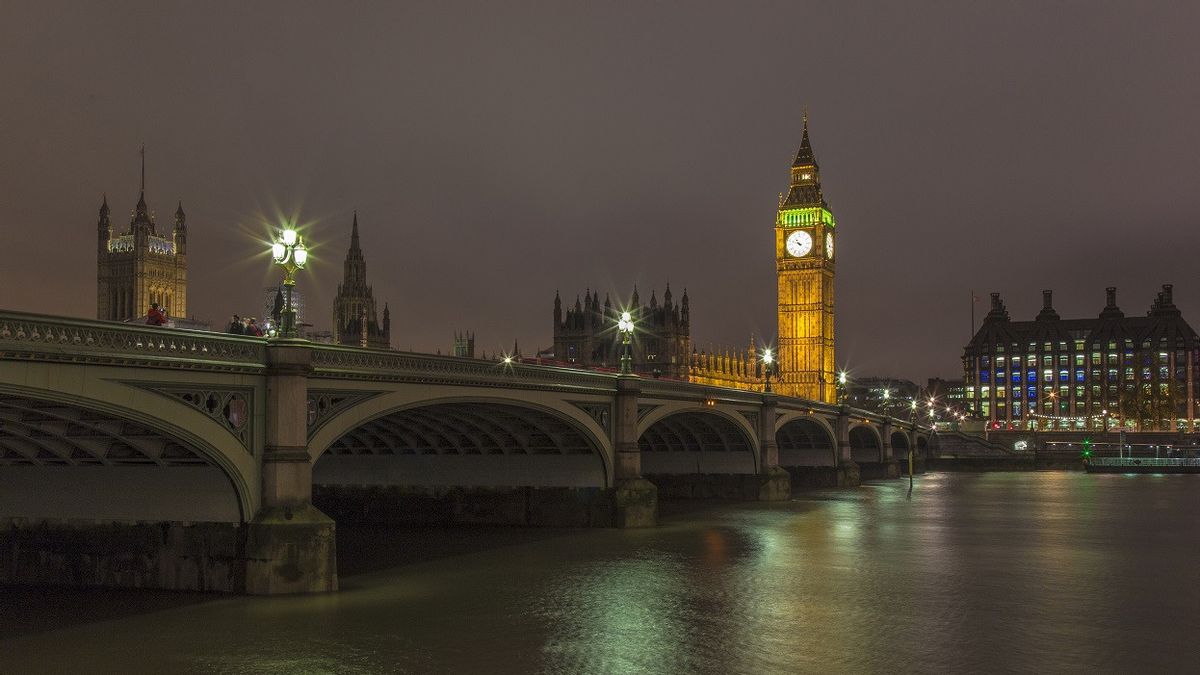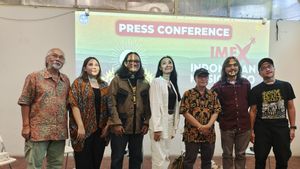
JAKARTA - If nothing goes wrong, the hands of the famous Big Ben clock in London, England will return to its original color, blue, after the renovation of the iconic building is complete.
Undergoing a renovation process for almost four years, one of the interesting things about the clock hands was revealed, which is blue, not black. Made the authorities take the decision to return the native blue Prussians.
This extensive project involved reglazing and repainting the clock, adding a lift to the tower, repairing the roof tiles, improving lighting and repairing the masonry. Costing around £80 million, the 177-year-old tower renovation project is scheduled to be completed in the second quarter of next year.
The settlement will be signaled by ringing the bell of the famous 13.7 tonne Big Ben which has been largely unheard since 2017. However, the exception in January 2020, the clock rang marking the moment Britain officially left the European Union.

Lindsay Hoyle Speaker of the House of Commons, UK Parliament said, "When Big Ben fans see the final result, the long wait will pay off.
"While we all yearn for Big Ben's voice marking the time and the scaffolding to be lifted from the tower, I think we will all agree on next year's opening, our patience has not been in vain," he quoted The National News September 7 as saying.
Long historyMeanwhile, launching the Indian Express, the tower which is now named the Elizabeth Tower was completed in 1859 and became the largest and most accurate in the world. The bell, dubbed 'Big Ben', was Britain's biggest for 23 years.
Long before, since the 1290s, a clock tower had stood at the site of Big Ben. It has always been an extension of the Palace of Westminster, a complex that houses the British Parliament.
In 1834, a fire destroyed the Palace of Westminster. It was then rebuilt in the 1840s by architect Charles Barry, who hired Augustus Welby Pugin to carry out his Big Ben designs.
Construction of the tower began in 1845 at the north end of the Palace of Westminster. Pugin built it in a neo-Gothic style from the inside out, meaning Londoners rarely saw workers or materials during construction.

He used bricks to build a tower, covered with sand-colored Anston stone. The top is a two-story iron tower. Inside, there was a winding staircase in one corner, an air vent to bring fresh air into the palace, and a ballast hole for the clock in the middle. At the base is a prison, meant for rogue MPs.
Clock design is a big challenge. Until then, time had never been as accurate as that measured by the sun. However, according to government documentation, Astronomer Royal wanted the most accurate tower clock in the world and specified that it must be accurate to within one second of hitting the clock.
In 1892, the Ayrton Light was installed at the top of the tower. It can be seen all over London, and signals when Parliament is convening after dark. It is said to have originally shone in the direction of Buckingham Palace so Queen Victoria (1837-1901) could see if MPs were working.
Previously, Big Ben had stopped ticking several times, mostly due to repair work, but also during World War II when it became mandatory.
Interesting fact, if someone were to stand under the Big Ben tower with a portable radio and listen to the bells live on the radio, they would hear the rumble on the radio first before hearing it from the tower. This is because radio waves travel at the speed of light, much like the signal from Big Ben's microphone to the radio station. The sound itself travels at a speed of 0.3 km per second.
The English, Chinese, Japanese, Arabic, and French versions are automatically generated by the AI. So there may still be inaccuracies in translating, please always see Indonesian as our main language. (system supported by DigitalSiber.id)












